The English names for this hulk of a vegetable include Ash Gourd, Wax Gourd, White Gourd, Winter Melon, Ash Pumpkin
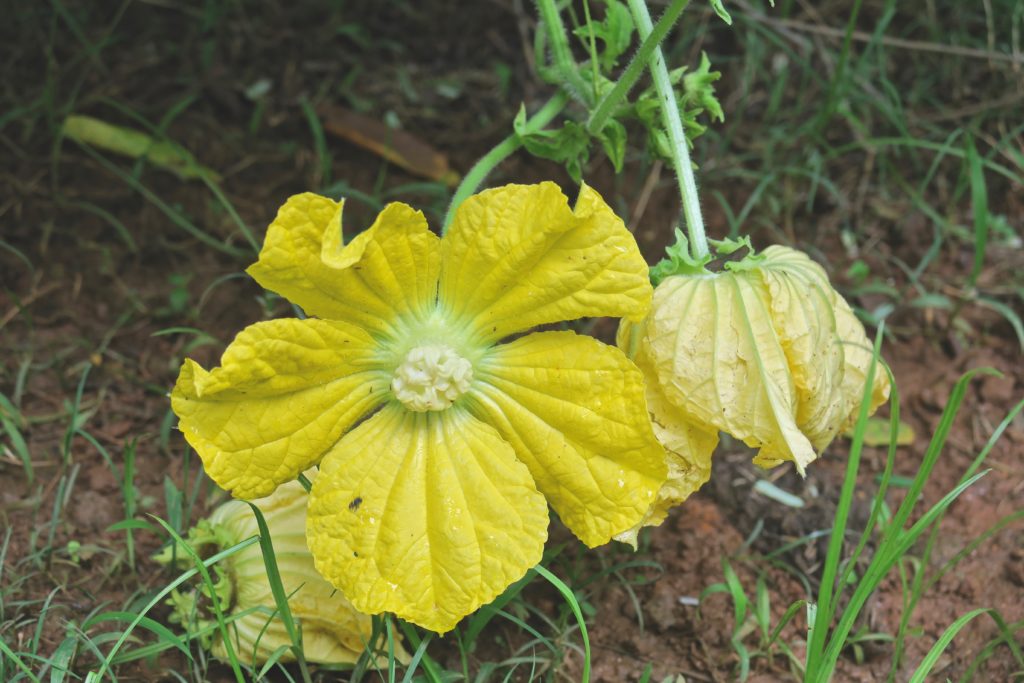
Ash gourd is a vine and an incredibly aggressive one at that. When the plant is young it is trailed onto twigs and dried coconut fronds. We led an ash gourd vine onto an Amla tree in our backyard and it’s completely taken over the poor tree. The vine is propagated by seed and is commonly grown across South and South East Asia. For more information of cultivation of the plant click here.
The gourd can grow to insane sizes, anywhere from 2kg to the largest that I could find – 16 kg. The ash gourd we harvested was around 10kgs. Here it is, looking deceptively small in my fathers large hands.
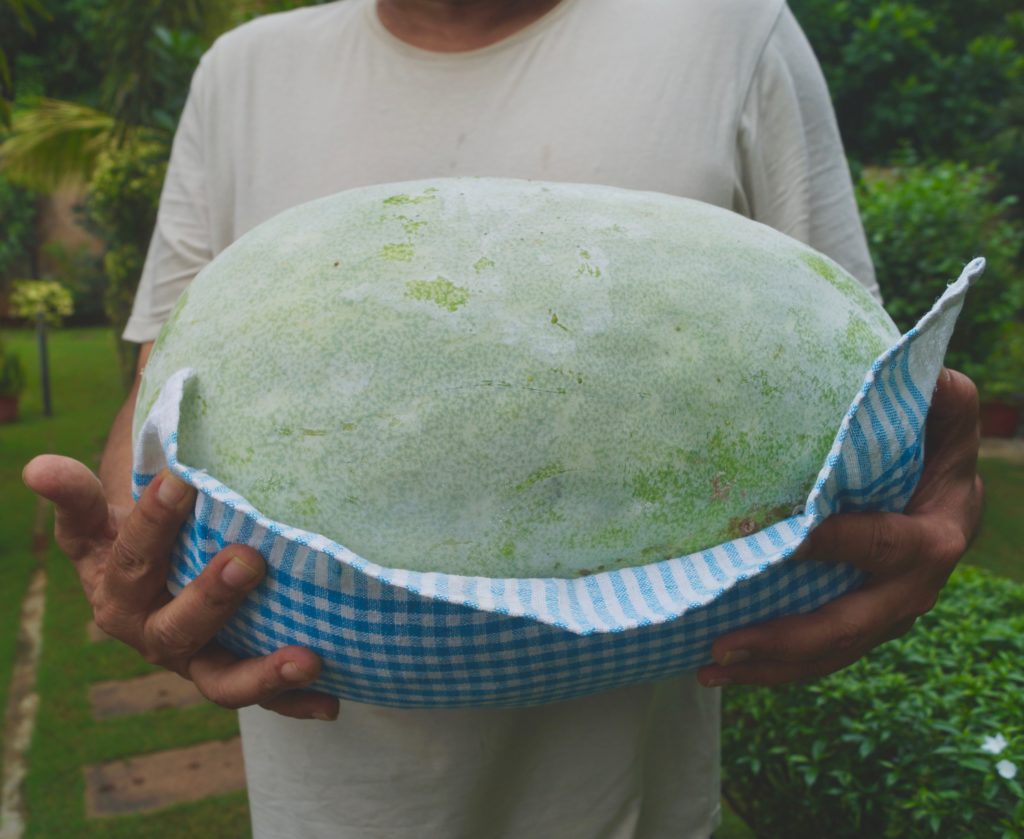
They can be harvested when they’re young or mature, depending on how you intend to use it. Apparently the shoots, tendrils and the leaves are also edible but they’re not commonly consumed around Kerala. Probably because the gourd itself is SO big, you’d have no space for anything else!
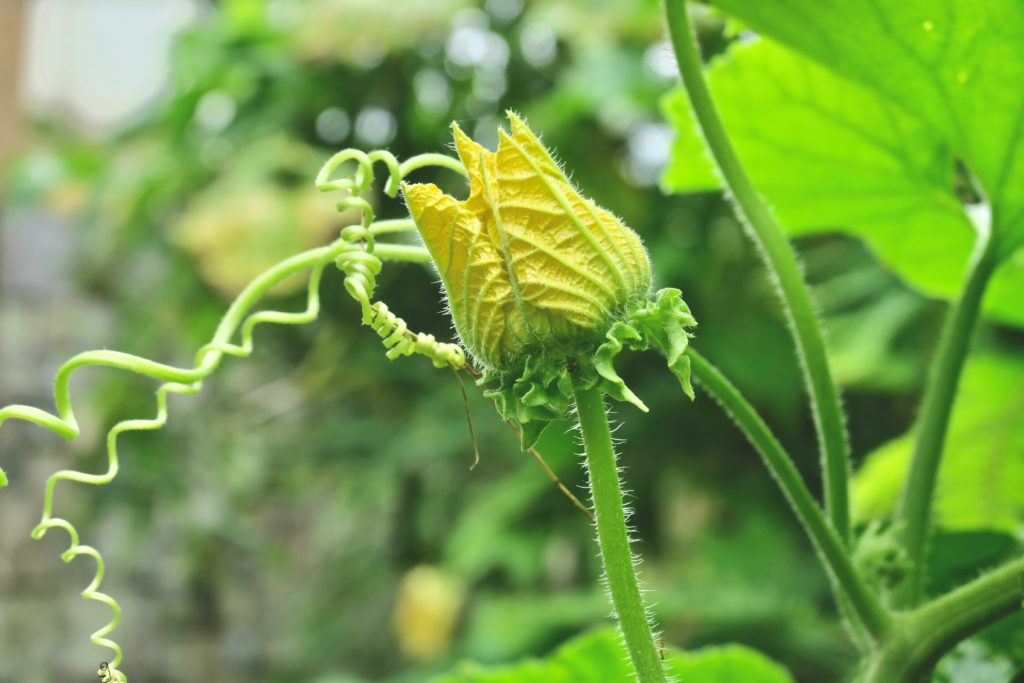
Much like my post lockdown self, the young plant and fruit are hairy but when it matures, the hair disappear and give way to a waxy exterior with a white ‘ash’. It’s this ash that protects the gourd from pests. The waxy exterior is also responsible for an incredibly long shelf life. When my grandmother was a child, her family would hang ash gourds in their kitchens for entire years. The official stance on this varies; in cooler climates it can be stored for longer but once it’s cut, you can store it for about a week in the refrigerator.
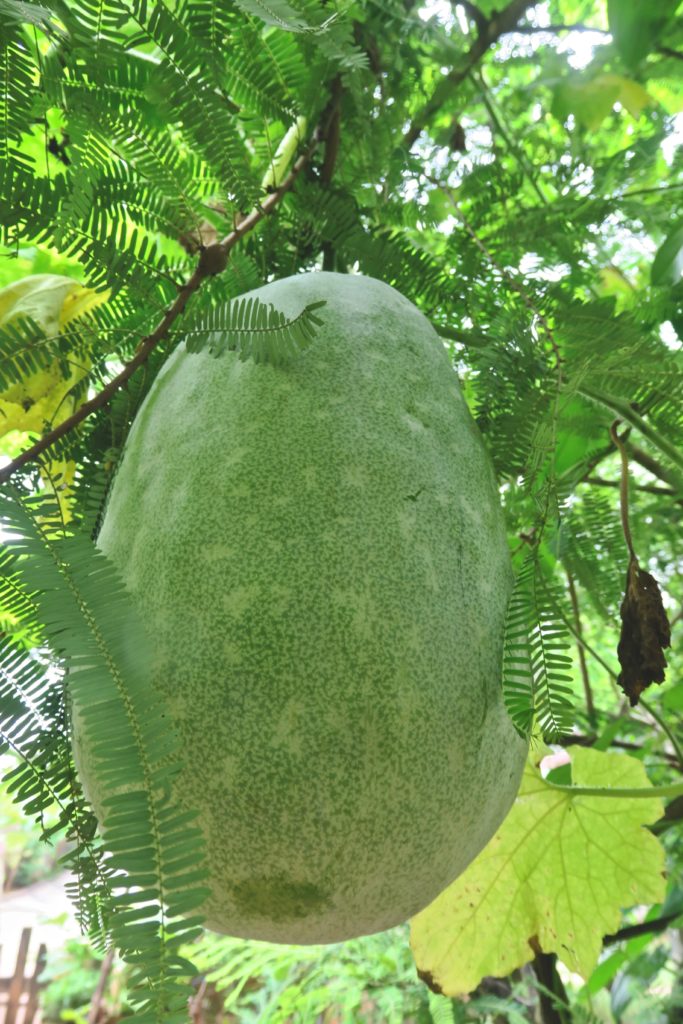
Don’t let the size fool you, Ash gourds are about 96% water and as a result, are incredibly low in calories. They’re low in protein, carbs and fat but rich in soluble fibre which helps in digestion. It also has a fair amount of Vitamin C and antioxidants that protect the body against cell damage.
Ash gourd is routinely touted as a miracle vegetable for weight loss. While I don’t believe there’s a ‘miracle’ anything for weight loss, I assume it’s because it’s really low in calories and the soluble fibre mentioned earlier. As a ‘healthy’ woman living in Kerala, I’ve had many people suggest Ash gourd juice as a ‘remedy’ for my ‘condition’. I hope the quotation marks adequately convey my thoughts on the subject.
As for the taste,
It doesn’t really have any. I read someone
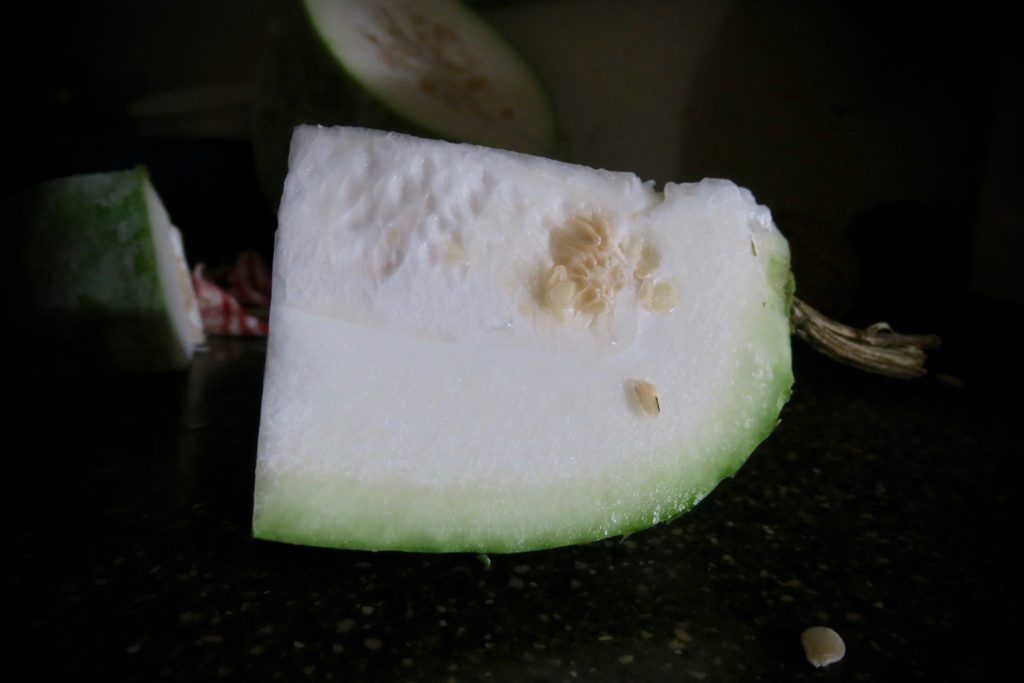
Now for the shameful part.
I don’t eat ash gourd. I’m really picky when it comes to vegetables, especially native veggies. As someone who watches a lot of Masterchef, I know that that is a BIG
Yes. But as a kid who grew up in the Middle East in the 90s eating fast food and GMO pumped exotic veggies, I still struggle with accepting local vegetables. Especially the endless varieties of gourds and tubers that are grown in the South. To date, the only ash gourd I’ve ever eaten has been accidental, when I’ve mistaken it for potatoes in sambhar.
However, in the words of literally every master chef contestant ever, I think I really need to push myself out of my comfort zone and find a way to celebrate this native ingredient.

*music intensifies*
